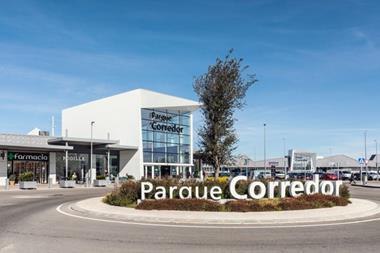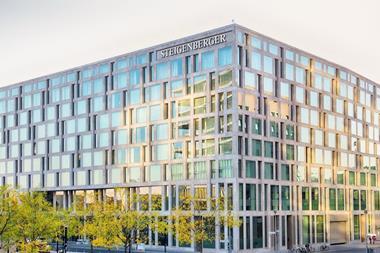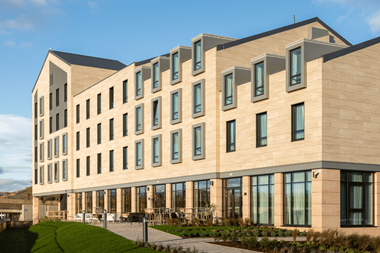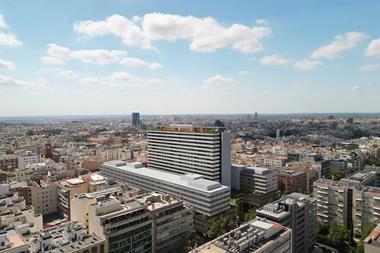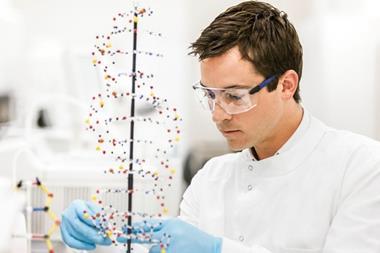A massive mixed-use project – including the Olympic Village for the forthcoming 2026 Winter Games – is set to arise on a disused railway site to the south of Milan.
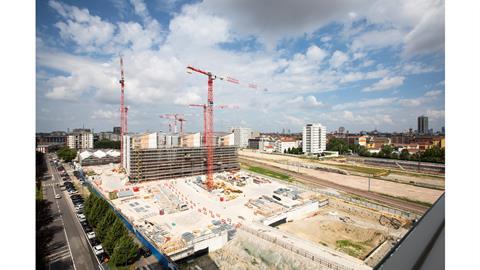
For many years the Porta Romana railway yard, located in the southern part of Milan between via Ripamonti and Corso Lodi, was something of an urban barrier, impeding direct passage across this corner of the city. Yet in 2005, the site was earmarked as part of the wider Milan Railway Yards project, which planned to redevelop over 1 million m2 of unused land blighted with old tracks, sidings and outhouses. Representing an agreement between the publicly controlled Ferrovie dello Stato (Italian State Railways), the Municipality of Milan and the Region of Lombardy, the plans also sought to involve private funds and real estate firms to develop the best possible architectural and social solutions for the brownfield plots.
In 2020, the public competition procedure for the Porta Romana Railway Yards was launched, with around 20 major Italian and international firms bidding for the work. The competition was won by Fondo Porta Romana, managed by Italy’s Coima and jointly owned by France’s Covivio, Prada Holding and the Coima ESG City Impact Fund.
The drafting of a masterplan followed, which was signed off in May 2022. That same year, on 24 November 2022, the purchase of the area from Gruppo FS Italiane was finalised for a total value of €180 mln.
Parts around the brownfield plot have already been transformed into smart new tertiary and cultural entities, such as Fondazione Prada, a gallery, workshop and studio space, Covivio’s Symbiosis community district (which now houses the STEP FuturAbility District), and several new office developments hosting international industrial and fashion brands.
The overall vision is one of a mixed-use zone combining residences, offices, social housing, student accommodation and services, connected to the wider metropolitan area via the railway and underground stations. The masterplan involves the redevelopment of 190,000 m2 of the railway yard into a wholly pedestrian area, of which more than 50% will be designated to public green spaces. The key component of the development is a large central park designed to ensure both urban continuity and bicycle and pedestrian connections with the existing city, as well as delivering green spaces and public meeting places.
The area is also notable for the presence of the Milan-Cortina 2026 Olympic Village, which, on completion of the XXV Olympic Winter Games, will be transformed into the largest affordable housing student residence in Italy, with approximately 1,700 beds.
Investor roles
The investment partners in Porta Romana all have different responsibilities across the project. Coima is taking the lead on the entire residential component, which will include both speculative residential units and the development of 320 subsidised housing units through a cooperation agreement with the Consorzio Cooperative Lavoratori (CCL) - a cooperative entity which supports the realisation of equitable and affordable housing stock. Coima is investing in the project through the Coima ESG City Impact Fund which is backed by the ENPAM Foundation, Cassa Forense, Cassa Dottori Commercialisti, Inarcassa, BCC Credito Cooperativo, CARIPARO Foundation, Compagnia di San Paolo and Coima.
Coima is also responsible for the Olympic Village, which will ultimately become student accommodation. Designed by architectural firm Skidmore, Owings & Merrill (SOM), the village occupies an area of approximately 60,000 m2. From the outset, it has been designed with a post-Olympics configuration in mind, to enable the physical spaces and services designed for the athletes to be integrated into the future district, thus minimising conversion work and further environmental impact. Work began in January 2023, and according to Coima, which has been tasked with delivering the project to the Olympic Committee by July 2025, the project is three months ahead of schedule.
Covivio has been tasked with the development of the eastern quadrant (Eastern Gate) of the Railway Yards, which will comprise a mix of offices, retail, hotels and services, around an elevated square served by public transport infrastructure.
Fashion house Prada Holding, meanwhile, is focused on the quality of the park and green areas, and will also construct a building for laboratory and office use to extend its existing activities in the area.
The development is being financed by Intesa Sanpaolo via a green loan undersigned by the three investors, contingent on certain KPIs linked to ESG standards being achieved. All buildings in the project will be LEED certified; building structures will be permanent and temporary units will be reusable. More than 30% of the energy is set to be generated through the installation of plants using renewable energy sources, including solar thermal and photovoltaic systems. Rainwater will be collected and reused, with a 40% reduction in CO2 emissions for heating and cooling.
Managing the village’s transformation post-games, the Coima Olympic Village Fund (COVF) was established in July, backed by CDP Real Asset, Italy’s sovereign wealth fund, through the National Fund for Sustainable Housing (FNAS), as well as the Coima Housing fund.



